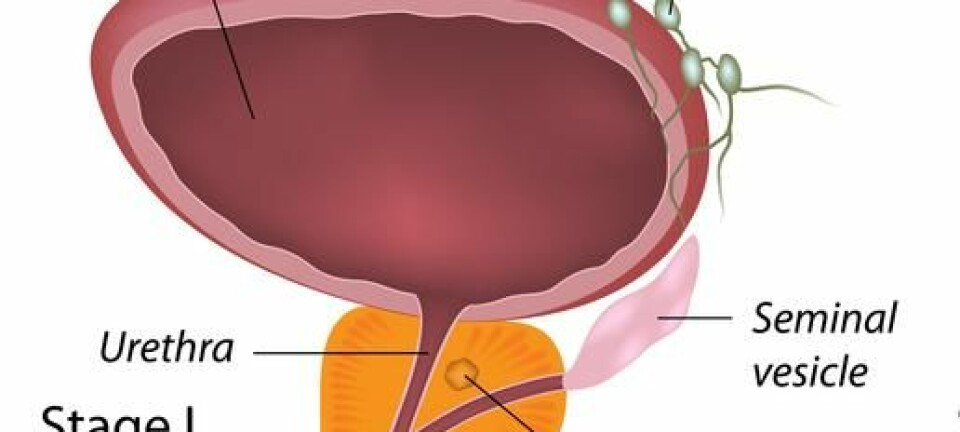
New cure for rare childhood diseases enters final phase of trials
If trials prove successful, a cure for previously untreatable rare childhood diseases will follow.
Lysosomal storage diseases, such as Fabry’s disease, Niemann-Pick disease type C, or Sandhoff disease. These are the names of diseases so rare that they do not attract much attention from the pharmaceutical industry.
So far there have been no treatments available for these deadly diseases, which only affects one or two in every 100,000 children.
But one biotech company may have found a cure and are about to embark on a phase III clinical trial, the last testing phase before a drug is approved.
Helping children worldwide
If it proves effective in the trial the medicine could be rolled out worldwide.
“We’ve now tested our potential medicine in cells from patients, in animal trials, and also in healthy volunteers, where the drug has shown to be very safe. We’re now ready to test it on sick children,” says one of the scientists behind the new drug, Dr. Thomas Kirkegaard, who is the scientific founder and Chief Scientific Officer of biotech company Orphazyme.
“We expect to finish the trial next year and if all goes well, then we hope to produce a medicine for a group of children who otherwise don’t have many treatment opportunities,” he says.
The results so far are published in Science Translational Medicine.
Colleague: excited by the results
Assistant Professor Lisa Frankel from the Biotech Research and Innovation Centre at the University of Copenhagen, Denmark is impressed by the results so far. She also studies lysosomal storage diseases, but was not involved in the new research.
She was already aware of Orphazyme’s work and was not disappointed by the most recent published results.
Frankel is particularly interested in the wide range of diseases that can be treated with the new drug.
“It’s interesting that the scientists have managed to get their medicine to cross the blood-heart-barrier, which is where other medicines for this group of diseases have failed to work in the past,” she says.
“I’m very excited to see how it’s going to end,” she says.
The body cannot recycle fats
Lysosomal storage disease sufferers lose skills associated with the central nervous system and may for example find it difficult to maintain balance or speak coherently.
“It’s downhill from there. Doctors can’t do anything to really change the course of the disease and an early death is inevitable. These diseases are so rare that it’s even difficult for doctors just to diagnose,” says Kirkegaard.
All cells in the body contain lysosomes, which allow the cells to reuse fats, amino acids, and proteins that are no longer of use in the cell.
But in a child suffering from lysosome storage disease the lysosomes cannot break down and reuse specific molecules, so these accumulate and become toxic. In the case of this research, the accumulating molecules are a type of fat called sphingolipids.
Unfortunately, sphingolipids are an especially important part of the central nervous system. If cells cannot reuse them, then it has knock-on effects throughout the central nervous system and the brain.
New treatment promotes production of heat shock proteins
The new treatment relies on a molecule that helps the body to produce a surplus of so-called ‘heat shock’ proteins. Kirkegaard’s previous research had already demonstrated how these proteins help the lysosomes to start reusing the crucial sphingolipids.
To do this, they developed a drug to stabilise the transcription factor for the gene that expresses the heat shock protein, HSP70. This is called arimoclomol.
“Arimoclomol basically restarts the system, so it’s aware that something has gone wrong. We’ve already shown that it works in cells from patients and in animal models of the disease,” says Kirkegaard.
Possible treatment for Parkinson’s disease
Arimoclomol helps the body to fight the disease in two ways. It helps to create lots of heat shock proteins to repair the dysfunctional enzymes so that they can break down sphingolipids, and it helps the lysosomes to function.
Arimoclomol could also be used to develop treatments for other diseases that affect the central nervous system, such as Parkinson’s disease.
“It may well be relevant in other diseases where the problem lies with lysosomes. Our focus is on lysosomal storage diseases, where we really need medicines, but we’re keeping our eyes out for opportunities to expand it to other degenerative diseases,” says Kirkegaard.
“It makes it even more exciting that the discoveries we make within a small area of research can be used in a much broader context,” he says.
-------------
Read the Danish version of this article on Videnskab.dk
Translated by: Catherine Jex









